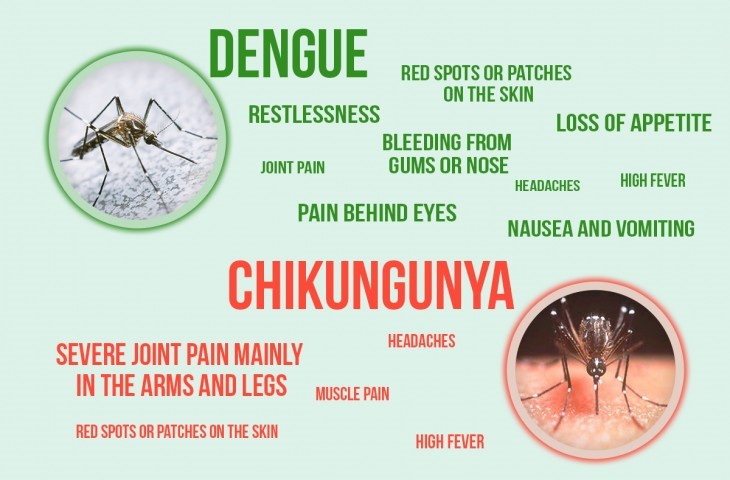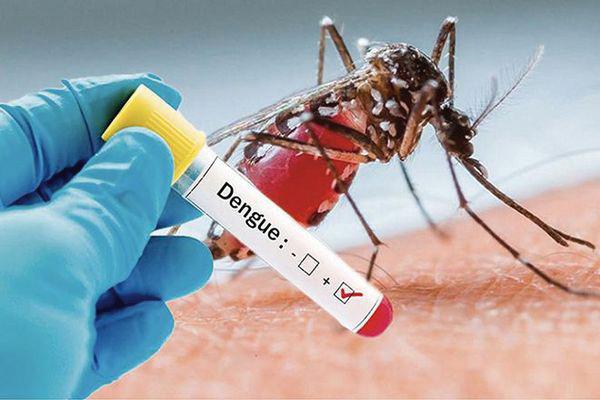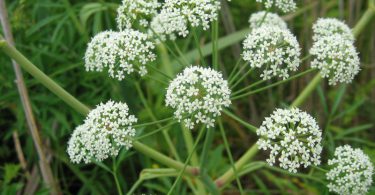
Abstract : Dengue is the most rapidly spreading mosquito borne viral disease in the world causing a wide spectrum of diseases that range from subclinical disease to severe flu-like symptoms. This article stresses upon the different characteristics of dengue and its risk factors, symptomatology, investigations in concise manner as well as emphasizes how homoeopathy can manage in such cases by its holistic approach of treatment.
Keywords: dengue, homoeopathy, Aedes aegypti, simillimum, genus epidemicus
Abbreviations: dengue fever (DF), dengue hemorrhagic fever (DHF), or dengue shock syndrome (DSS), World Health Organization (WHO), dengue (DEN), IgM antibody capture ELISA (MAC ELISA), enzyme-linked immunosorbent assay (ELISA).
Introduction
Dengue, additionally known as break bone fever or dandy fever, an acute viral infection with diphasic febrile episode, severe headache, myalgia and morbilliform rash caused by dengue virus, also known as toga virus, flavivirus. These infections may be asymptomatic or may lead to classical dengue fever (DF), dengue hemorrhagic fever (DHF), or dengue shock syndrome (DSS). Severe dengue was first recognized in the Philippines and Thailand in the 1950’s during dengue epidemic (1).
Epidemiology
The incidence of dengue has grown dramatically around the world in recent decades, the number of dengue cases reported to WHO increased over 8 times in the last two decades. One modeling estimate indicates that there are about 390 million dengue virus infections per year, of which 96 million manifests clinically. Another study on the dengue prevalence estimates that about 3.9 billion people are at risk of infection with dengue viruses. Despite risk of infection existing in 129 countries, about 70% of the burden is in Asia (2).

Aetiology
The causative virus is usually harboured by female mosquito, Aedes aegypti, and transmitted to man during bite. There are four distinct serotypes of this virus e.g., DEN 1, DEN 2, DEN 3 and DEN 4 which are responsible for human disease (1).
Clinical features
Onset is acute.
Incubation period – 3-15 days (average 7 to 10 days)
Symptoms
High temperature comes with chill, or sometimes rigor and goes away with sweating. Severe maddening, frontal headache, pain behind eyeballs and severe backache are invariably present. There is also severe pain in the long bones particularly at the insertion of tendons and ligaments. That is why the disease is also called breakbone fever.
Nausea, constipation, alteration of taste and smell are common features. Sore throat, prostration and depression are also present.
On examination
- Temperature is raised which comes down by crisis on 3rd day but again goes up on 4th or 5th day giving the typical saddleback temperature curve of dengue.
- Biphasic rash-A prodromal rash consisting of erythema or simple flushing of face may occur with initial fever, appears on about the 6th day with morbilliform (measles-like) character first on the dorsal aspect of hands and feet, then spreads towards the trunk but face is sometimes spared and last for 2 hours to several days.
- Generalized lymphadenopathy, particularly in the cervical region, is common.
- Pulse shows relative bradycardia and dicrotic character. Hypotension may be noted.
- Delirium, insomnia, agitation or depression may occur.
- Spleen may rarely be palpable.
- Transient loss of accommodation due to paralysis of ciliary muscles may rarely develop. Red eye is commonly seen.
- Dengue hemorrhagic fever (DHF) is common in children living in endemic areas. Serotype 2 is mostly the causative agent but 3, 4, 1 in decreasing frequency are also involved. Different types of haemorrhages like cutaneous, nasal, conjunctival and gastrointestinal bleeding may occur.
- Dengue shock syndrome (DSS). Plasma leakage if continued will ultimately lead to DSS characterized by pallor, anemia, low blood pressure, cold extremities, weak and quick pulse, restlessness, etc (1) (3).
Complications
Hemorrhages under skin (hemorrhagic dengue-DHF), otitis media, bronchopneumonia, pneumonia, herpes labialis, jaundice in rare cases, mucous membrane or iritis, orchitis, oophoritis, depression, shock and collapse (DSS), marrow aplasia, reye’s syndrome, fall of hair, encephalitis, transverse myelitis (1).
Investigations
- Leucopenia with toxic granulation of polymorphs is constant feature. Thrombocytopenia may also develop.
- Urine contains albumin.
- Complement fixation test may be positive.
- Virus may be recovered in acute phase of the disease from blood.
- ELISA test or Antibody capture ELISA (MAC ELISA) may be positive.
- Haemoconcentration is present particularly in DHF and DSS.
- Immunohistochemistry for detection of antigen can also be done from tissue (1).
Scope of homoeopathy in preventive medicine
Homoeopathy is based on the role of similar. It is effective in treating all natural diseases. According to the law of similar, the diseases are treated and cured by drugs capable of producing in healthy person symptoms similar to the disease to be treated. A suitable simillimum can be found in the event of an outbreak of an epidemic. Genus epidemicus is the simillimum that can be applied as a curative in cases as well as a preventive for containment of the dengue epidemic (4).
Advantages of homoeopathic prophylaxis
- Easily administered, as it is palatable, hence widely acceptable.
- Easy dispensability and disreputability ensuring maximum coverage at a very low cost.
- No cold chain required for distribution and storage to retain the potency of the drug.
- No bad effects or side effects to the drug.
- Can be used across the spectrum of population, irrespective of age, gender or health status.
- Preventives can be employed even before the actual outbreak of an epidemic (4).
Homoeopathic medicines
There are several references in the literature for the treatment of dengue epidemic with homoeopathic medicines. The aim of treatment is to provide symptomatic improvement, minimise complications and promote early recovery of patient.
- 1. Eupatorium perfoliatum – The chief indication is severe pains in the bones as if broken all over. Chill comes at morning, vomiting of bile between the chill and heat with insatiable thirst before chill. Occipital pain after lying down with a sense of heaviness. Perspiration relieves all symptoms except headache.
- Bryonia alba – Gradual onset of symptoms. Fever with chilliness, frequently with heat of head, red cheeks and thirst. Very irritable, inclined to be angry. Dryness of mucous membranes with sluggishness, stitching pains, aggravated by any motion. Great thirst for large quantities of cold water, at long interval. Sweat relieves fever. Pulse full, hard, tense and quick.
- Gelsemium sempervirens – Fever accompanied with dizziness, drowsiness, dullness and trembling. Patient shakes so much so he wants to be held. Chill without thirst. Pulse is slow while being quiet, but greatly accelerated on motion. Pain in the forehead behind the eyes.
- Rhus toxicodendron – Slow fever when sensorium becomes cloudy or stupefy, with low grade of muttering delirium. Fever with weakness of the whole body, desire to stretch the limbs. Great restlessness, patient cannot remain in bed, cannot stay long in one position.
- Aconitum napellus – Indicated in the beginning of the disease when complaints are sudden, violent, with anguish and restlessness. Heat with burning thirst for the large quantities of cold water. Pulse is full, hard, frequent and tossing about with agony, becomes intolerable towards evening and on going to sleep. Fever with dry and hot skin, face red, or pale and red alternately where cold stage is most marked.
- Belladonna – Sudden onset of symptoms. Fever with heat, redness, throbbing and burning. No thirst with fever. Cold extremities and throbbing headache. Pain in forehead behind eyes. The fever is worse at night. Fever with throbbing headache and delirium, eyes red & glistening, the skin is hot and burning. Fever followed by a profuse sweat which brings no relief.
- Arsenicum album – High temperature. Periodicity marked with marked weakness. Cold sweats with marked exhaustion. Delirium; worse after midnight. Great mental restlessness. Rapid sinking of vital force, fainting with disproportionate weakness. Unquenchable thirst, drinks water often but little.
- Ferrum phosphoricum – Remedy for first stage of fever. Pale, sensitive, anemic with easy flushing of face. High fever, skin dry and hot, quick pulse, thirst increased. Chill daily at afternoon, returning at the same time every day.
- Ipecacuanha – Fever accompanied with gastric disturbances. Persistent nausea in one or all stages. Constant nausea, not relieved even by vomiting. Slightest chill with much heat, nausea, vomiting, with dyspnoea. Backache with long fever, short chill, heat, usually with thirst, headache, nausea and cough.
- Natrum muriaticum – Fever appears with chill at morning. Violent thirst which increases with fever. Coldness of body and continuous marked chilliness. Sweat on every exertion. Fever blisters around mouth. All symptoms are relieved by sweating.
- Nux vomica – Cold stage predominates, paroxysms anticipated in the morning. Chilly, must be covered in every stage of fever – chill heat or sweat. Great heat like whole body burning hot, face red and hot, yet patient cannot move or uncover without being chilly. Sour, perspiration, usuallly on one side of the body.
- Pulsatilla nigricans – Chilliness, even in warm room, without thirst. Chilly with pains, in spots, worse evening. Intolerable burning heat at night. One – sided sweat with pains. Symptoms ever changing like no two stools, no two chills, no two attacks alike; very well one hour, very miserable the next; apparently contradictory (4) (5) (6).
Homoeopathic medicine as preventive
As per the principles of homoeopathy, a genus epidemicus can be identified for the sporadic and epidemic situations. The process of selection of genus epidemicus involves following steps:
- The totality of symptoms related to the current epidemic is formulated by study of all the signs and symptoms of minimum 20-30 cases preferably from different regions.
- The totality of symptoms to be thoroughly studied and following appropriate repertorisation process, a group of medicines are to be identified and to be given to these cases on the basis of individualisation. The medicine, which is most frequently indicated and has potential of providing the quick and favourable response to the patient, shall be the genius epidemicus,
- Drugs commonly found indicated as genius epidemicus in the past are Eupatorium perfoliatum, Rhus toxicodendron, and Bryonia alba. One of these in 30C or 200C potency can be safely given twice daily for three days as prophylactic (4).
Management of dengue fever
- Prevention of mosquito breeding:
- Preventing mosquitoes from accessing egg-laying habitats;
- Disposing of solid waste properly and removing artificial man-made habitats that can hold water;
- Covering, emptying and cleaning of domestic water storage containers regularly;
- Applying insecticides to water storage outdoor containers;
- Personal protection from mosquito bites:
- Use of personal household protection measures, such as window screens, repellents, insecticide treated materials, coils and vaporizers.
- Wear clothing that minimizes skin exposure to mosquitoes;
- Community engagement:
- Educating the community about the risks of mosquito-borne diseases;
- Engaging with the community to improve mobilization for sustained vector control;
- Reactive vector control:
- Emergency vector control measures such as applying insecticides as space spraying during outbreaks may be used by health authorities;
- Active mosquito and virus surveillance:
- Active monitoring and surveillance of vector abundance and species composition should be carried out to determine effectiveness of control interventions;
- Prospectively monitor prevalence of virus in the mosquito population, with active screening of sentinel mosquito collections. (4)
Conclusion
Homoeopathy is very effective in preventing dengue outbreak. It plays a vital role in dengue epidemic because to cure the patient would be to cure the dengue, and in order to cure the patient it is necessary to get the symptoms that represent the patient and by administrating simillimum it can be cured or managed as per the condition of patient. Therefore, homoeopathy is a good choice of treatment in dengue epidemic.

References
- Das PC. Text book of Medicine. 6th ed. Kolkata: Current Book International; 2010
- WHO. Dengue and severe dengue. [Internet] Available from: https://www.who.int/news-room/fact-sheets/detail/dengue-and-severe-dengue
- Davidson’s. Principles and Practice of Medicine. 19th Ed. New York: Churchill Livingstone; 2002
- Manchanda RK. Guidelines for Homoeopathic Practitioners for Clinical Management of Dengue Fever. 2nd Ed. New Delhi: Central Council for Research in Homoeopathy; 2015
- Boericke W. New Manual of Homoeopathic Materia Medica with Repertory. 31st ed. New Delhi: B. Jain Publishers; 2013.
- Kent JT. Lectures on Homoeopathic Materia Medica. 17th Ed. New Delhi: B. Jain Publishers; 2018





